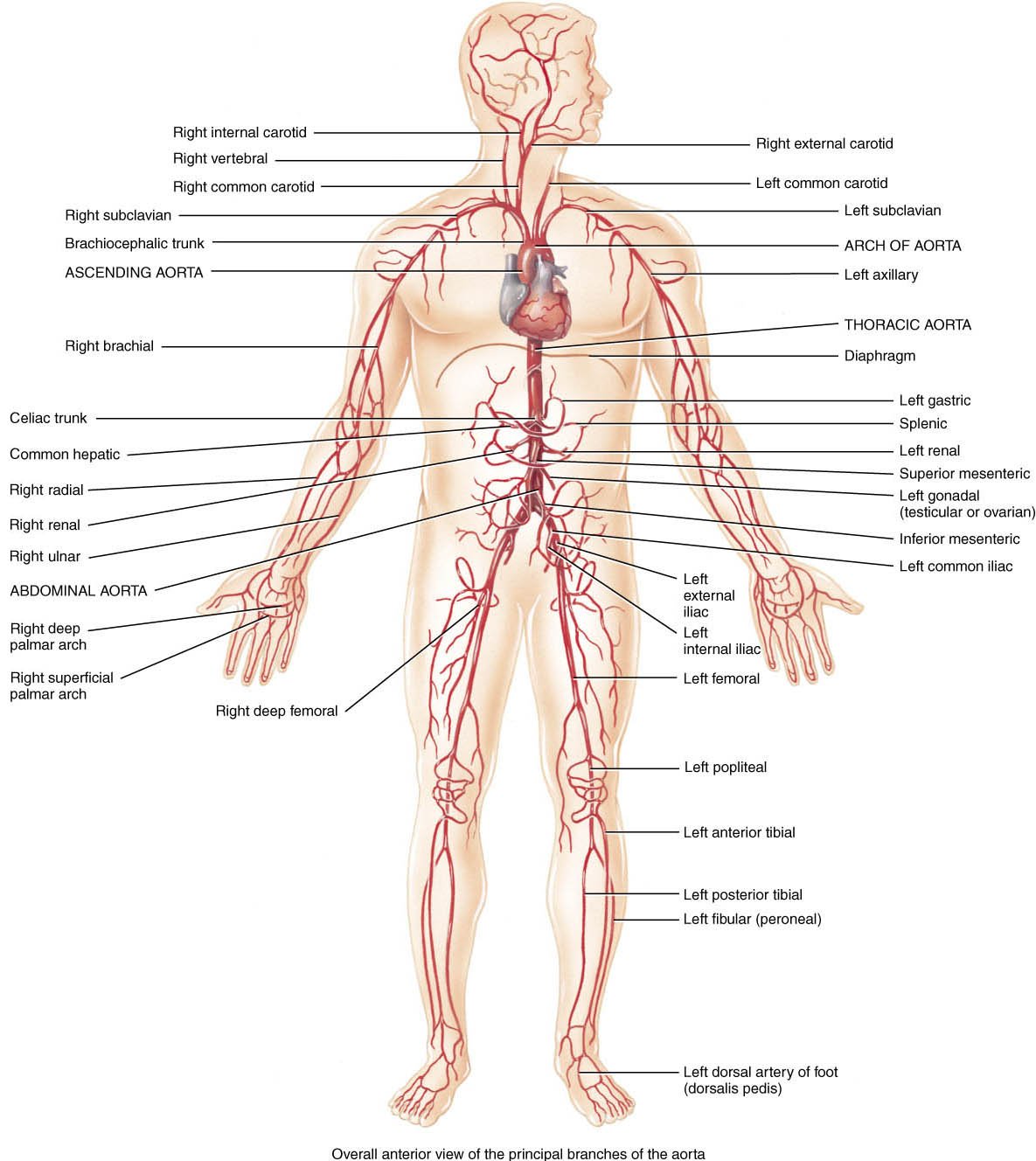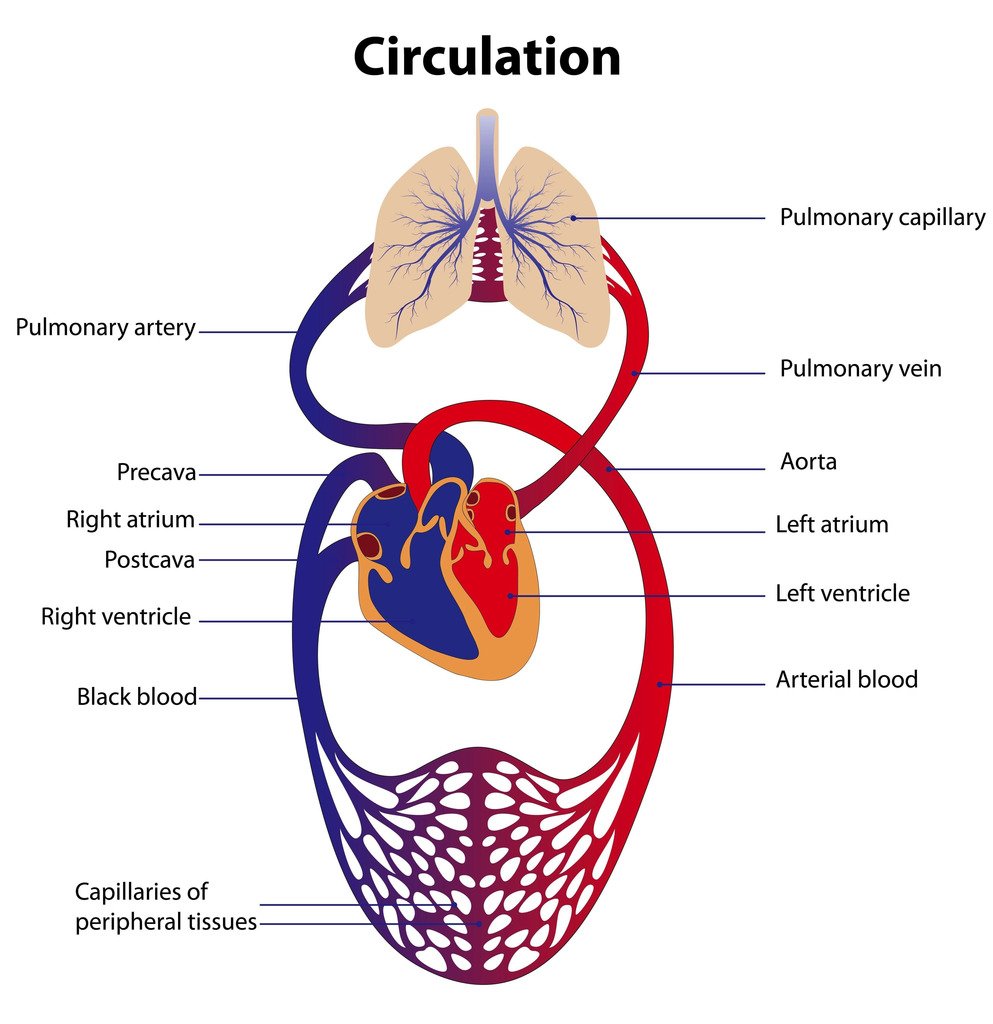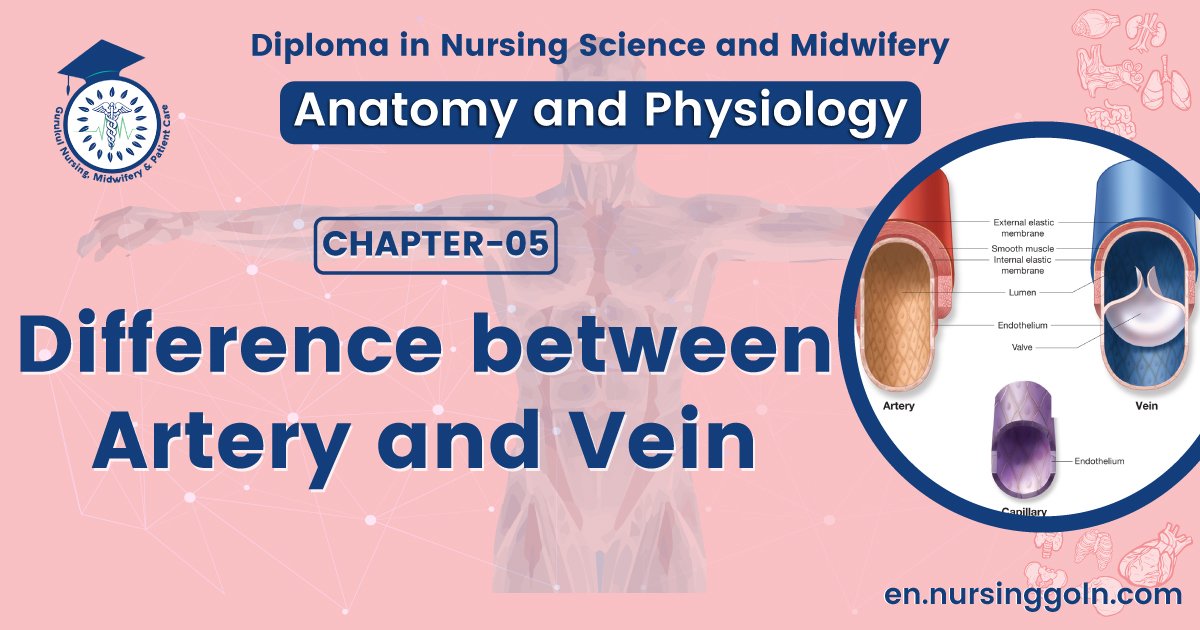Difference between Artery and Vein–The course is designed for the basic understanding of anatomical structures and physiological functions of human body, musculoskeletal system, digestive system, respiratory system; cardiovascular system; urinary system, endocrine system, reproductive system, nervous system, hematologic system, sensory organs, integumentary system, and immune system.The aim of the course is to acquire knowledge and skills regarding anatomy and physiology.

Difference between Artery and Vein
Arteries and veins are the parts of the circulatory system which carry blood between the heart, lungs, and all other areas of the body. While they both carry blood, they do not have much else in common.
Arteries and veins are made of somewhat different tissue, each performing certain functions in a specialized way. The first and most important difference between the two is that all arteries carry blood away from the heart, and all veins carry blood to the heart from outlying areas.
Most arteries carry oxygenated blood, and most veins carry deoxygenated blood; the pulmonary arteries and veins are the exceptions to this rule. Both the arteries and veins work together in order to create the pulmonary and systemic circulation which is crucial for survival and for the body staying fit and healthy.

| Veins | Arteries | |
| Definition | Veins are blood vessels that are responsible for carrying deoxygenated blood from various parts of the body to the heart, except the pulmonary and umbilical veins. | Arteries are blood vessels that are responsible for carry fresh oxygenated blood from the heart to the rest of the body, except for the pulmonary and umbilical arteries. |
| Purpose | Veins carry deoxygenated blood to the heart (with the exception of pulmonary veins and umbilical vein). | Arteries carry oxygenated blood from the heart to the body (with the exception of pulmonary arteries and umbilical arteries) |
| Types | Superficial veins, deep veins, pulmonary veins and systemic veins. | Pulmonary, systemic arteries, Aorta and arterioles. |
| Direction of Blood Flow | From the different parts of the body to the heart (with the exception of pulmonary veins and umbilical vein). | From the heart to the rest of the body (with the exception of pulmonary arteries and umbilical artery) |
| Anatomy | Veins have three layers Outer layer of tissue, thin muscle layer in the middle and an inner layer of epithelial cells. The layers are thin and weak and collapsible, if no blood passes through them. | Arteries have three layers: Outer layer of tissue, muscular middle later and an inner layer of epithelial cells. The middle muscle layer is thick and strong in order to sustain the pressure of the blood flow. The arteries are smooth on the inside. |
| Walls | Thin, less muscular, less elastic& Collapsible | Thick, muscular, elastic and Rigid |
| Thickest Layer | Tunica Adventitia | Tunica Media |
| Color | Dark red, seems almost blue | Red |
| VALVE | Usually present | Absence |
Circulation and types of circulation

Circulation:
The process by which blood & lymph flow through a closed system of vessel is called circulation.
Types of circulation:
- Systemic circulation or, Greater circulation or, High pressure circulation: Circulation of blood from left ventricle to the tissue and from the tissue to right atrium of heart is called systemic circulation
- Pulmonary circulation or, Lesser circulation or, Low pressure circulation:Circulation of blood from right ventricle to the lungs and from the lungs to the left atrium of heart is called pulmonary circulation
Functions of circulation:
- To supply the O2, nutrition to the tissues.
- To carry away different metabolic waste products & CO2 from the tissues for elimination.
- To prevent intravascular coagulation of blood.
- Helps to maintain thermal balance throughout the body
- Maintain an optimum environment for cellular functions.
(Ref: Ross & Wilson 9″+ K. Indu, 1 ed)
Read more:
